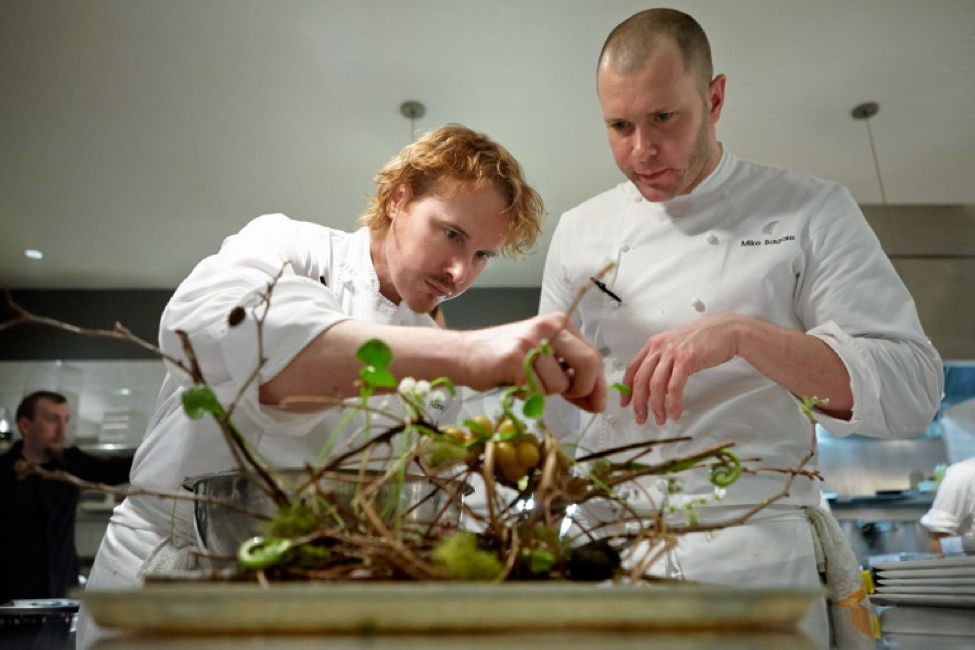Have you ever had a meal that tickled your intellectual curiosity, delighted your sensory perceptions and of course, sated your appetite? Challenged your concepts of what a restaurant should be and what it should deliver? That’s what Chef Grant Achatz and his team at Alinea, Chicago are trying to create— over and over again. Much as I would like to have had the actual experience, it was while watching an episode of Chef’s Table that I saw eerily familiar themes– concepts we talk and write about in the services outsourcing industry everyday.

Here are three takeaways from Alinea that I put together that are meaningful “food for thought” for service providers, buyers and influencers alike:
- The maker is as important as the consumer: Whether its for IT, business process services, call center operations, or analytics services, we are increasingly telling service providers that they have to think about the customer experience, and alter their service delivery metrics and workflows around delivering for the “customer first” organization. Sometimes its easy to forget that behind all the delivery are new generations of global workforces, that want to do meaningful work that “makes a difference”, instead of getting stuck in robotic, rote processes. Alinea sees the fulfilment of its team’s creative pursuits and experiences to be as important as those that it delivers to its customers. Chef Achatz describes, “Doing the same thing over and over again bores me. [My Colleague] will say, “Well, none of the guests that are coming in tonight have ever been to this restaurant before. So for them it’s all new.” And I go, Yeah, but…what about us?” We need better ways to link employee experiences to the work they deliver, and the ideas they continually generate.
- Innovation and risk go hand in hand: With the As-a-Service Economy, and the evolution to the Intelligent OneOffice (or Dumboffice, as the case may be), we’re talking today about the eventual demise of the labor model, new opportunities for intelligent digital data, support and processes – and a transition period for an entire industry in the long run. Which ones will be able to make the shift, attract and motivate the right talent that “gets it”, make the smart platform and data buys, and articulate the most compelling visions for running the digital businesses of the future for their clients? Chef Grant takes reinvention so seriously, Alinea throws away perfectly good menus and starts from scratch on a regular basis. His colleague mentions on the show “We wanna lionize him [Grant] and romanticize him for creativity and innovation. But you can’t do it without being risky…What can you keep doing that’s new, that people will still like? And will you destroy yourself or destroy your reputation, or destroy the restaurant as a business…in the pursuit of doing something new?”
Three Michelin stars in, the idea of reinventing food and the restaurant experience is obviously still paying off for Chef Grant. Enterprise clients, by the same token, often state in our research that their hands are tied on innovation efforts with their service providers, for various reasons that have a lot to do with risk. Yet, we see a subsection of their peers succeed with collaborative engagements in place, creating joint innovation funds and chipping away at their legacy practices with their service partners. Innovation and risk – you cannot accept/expect one without planning for the other.
- Reimagination is not a one man job: Alinea hit hard times despite all this success – in 2007 the press dubbed Grant as “the chef who couldn’t taste”, following his diagnosis of stage IV mouth cancer. A miraculous treatment saved his life, but took away his taste sensitivity. Grant powered through this phase with a renewed fervor to prove himself. He came up with even more provocative food concepts, and designed a system to communicate with his team on exactly how they were to be prepared (e.g. on a 1-5 acidic scale of pickles to bread…), and opened up other ideas for his sous chefs to experiment with more (how can we make food float?). This was revolutionary for an industry that thrives on “secret sauces” and ideas that chefs closely guard all the way to their graves.
We need to recognize that a lot of service providers today are in Chef Grant’s shoes – doing retail customer service without selling anything, running claims analytics without being insurance companies. This doesn’t exclude them from being innovative, or understanding the nuances of a particular industry. We need this caliber of human collaboration between buyers and service providers in the As-a-Service Economy, that can jointly contribute to executing on new ideas, without master-slave constraints.
These are seemingly broad, “soft” and intangible concepts, but they will dictate the level of success that service providers will have in either becoming OneOffice Enablers or left perfecting their backoffice outsourcing recipes. As for Alinea, they have just undergone renovations to rip apart and put together their well-run restaurant. In the episode, Chef Grant even wonders why plate manufacturers get to decide the canvas on which food is presented. He asks rhetorically, “Can we eliminate what we’ve been doing for the last ten years…and start over? And, uh… the answer is, “Yeah.” Sound familiar?
Posted in : Business Process Outsourcing (BPO), Design Thinking





